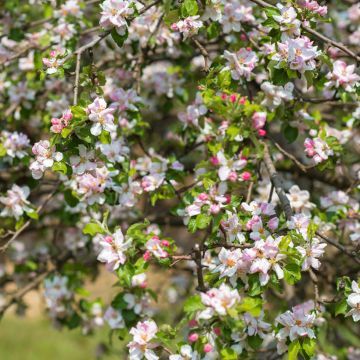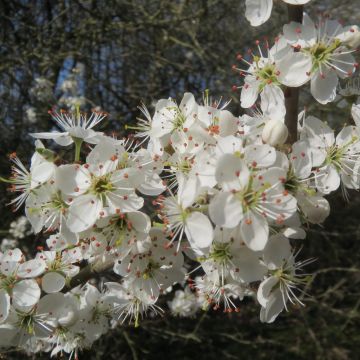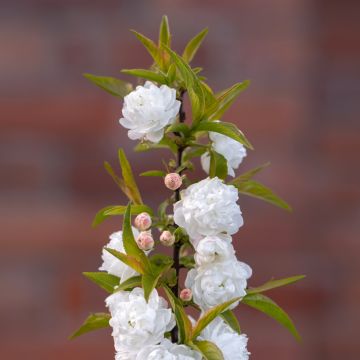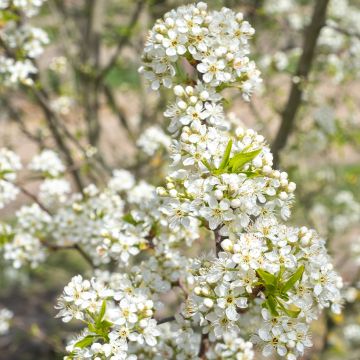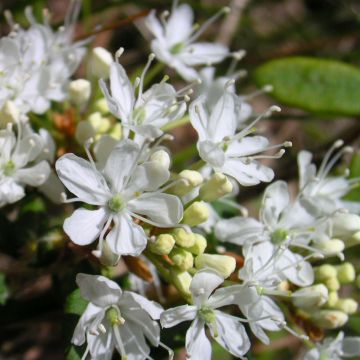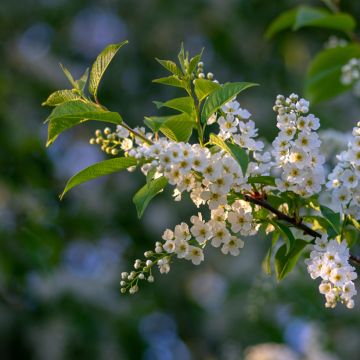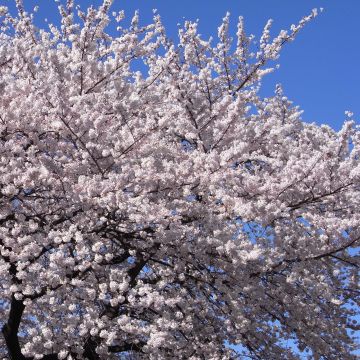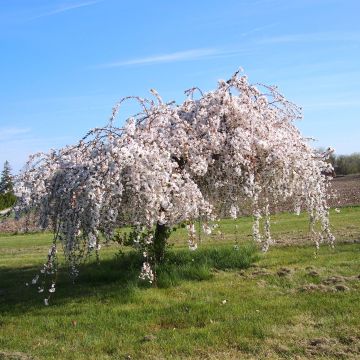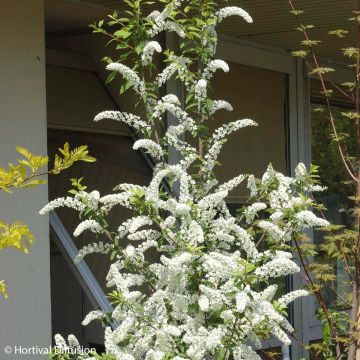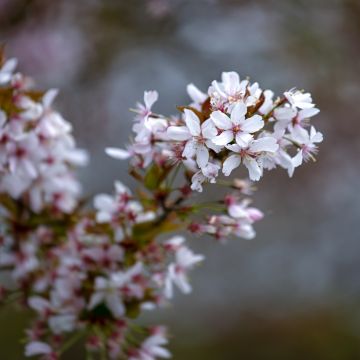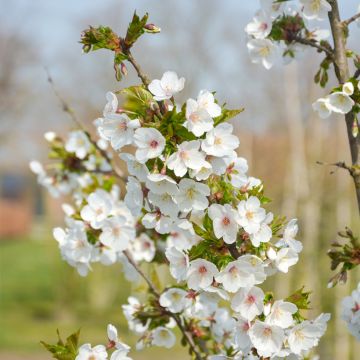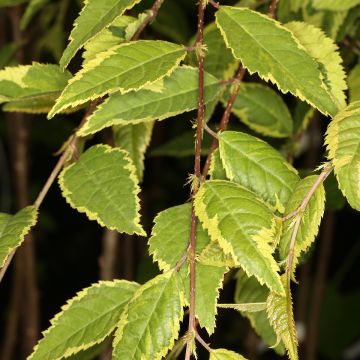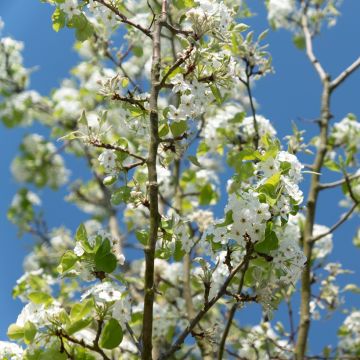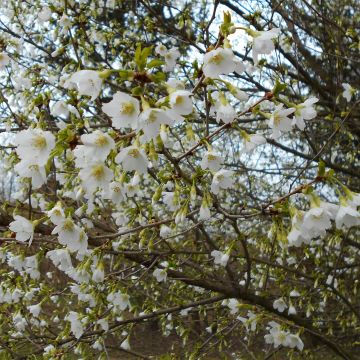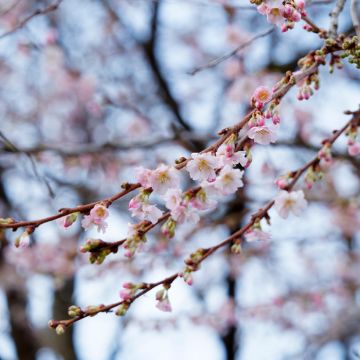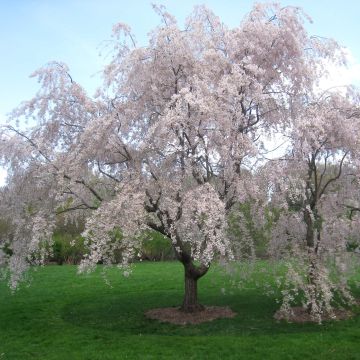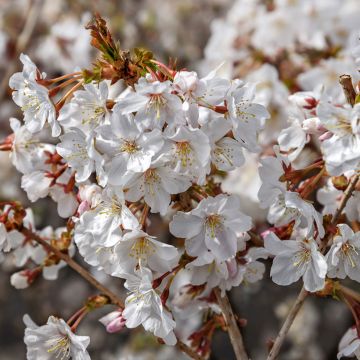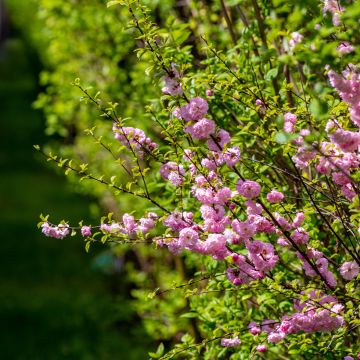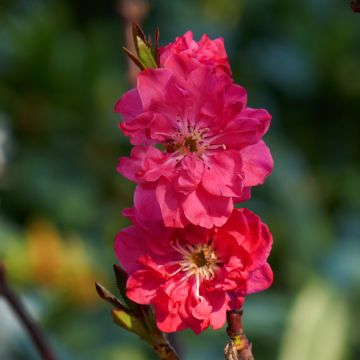Shipping country and language
Your country of residence may be:
Your country of residence is:
For a better user experience on our website, you can select:
Your shipping country:
Andorra
Austria
Belgium
Bulgaria
Canada
Chile
Croatia
Cyprus
Czechia
Denmark
Estonia
Finland
France
Germany
Greece
Hungary
Iceland
Ireland
Italy
Latvia
Lithuania
Luxembourg
Malta
Monaco
Netherlands
Poland
Portugal
Romania
Slovakia
Slovenia
Spain
Sweden
Switzerland
United Kingdom
We only deliver seed and bulb products to your country. If you add other products to your basket, they cannot be shipped.
Language:
French
German
Spanish
English
My Account
Hello
My wish lists
Plantfit
Log in / Register
Existing customer?
New customer?
Create an account to track your orders, access our customer service and, if you wish, make the most of our upcoming offers.
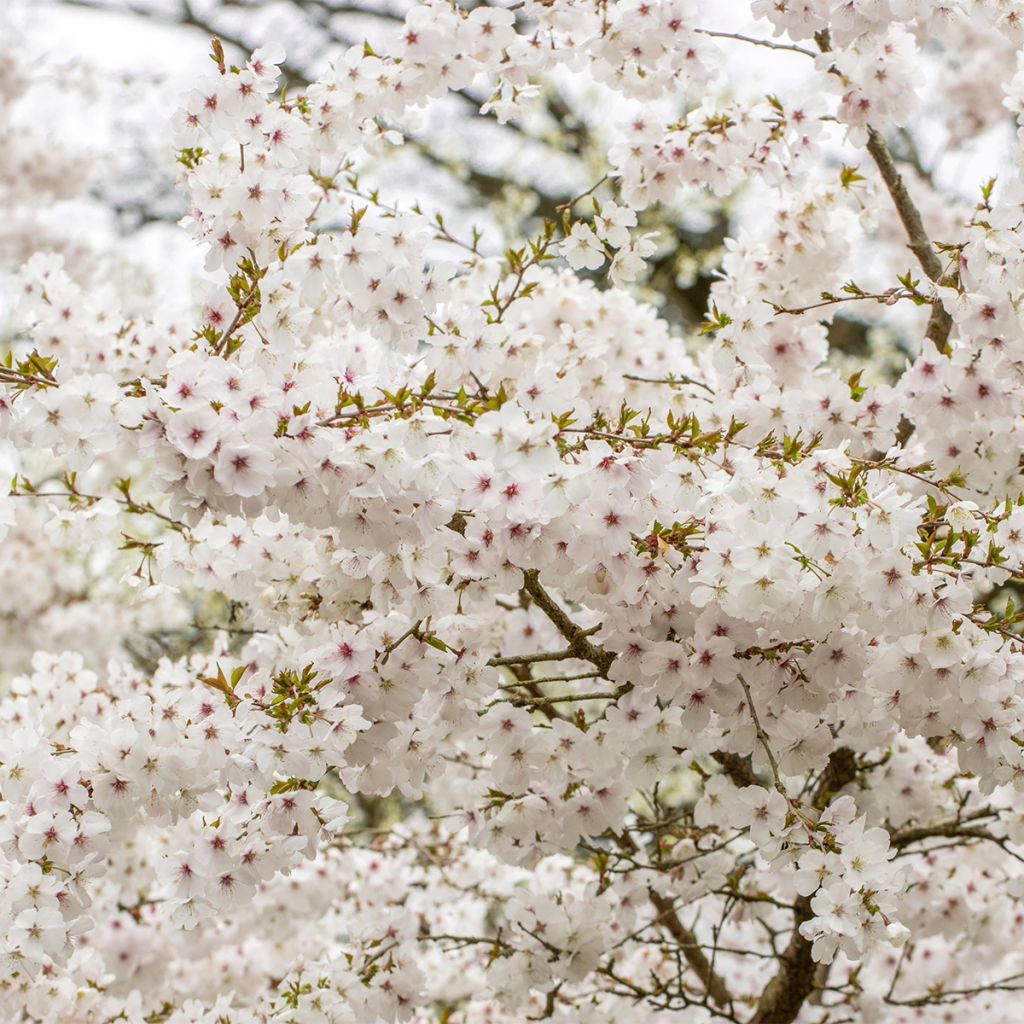

Prunus The Bride
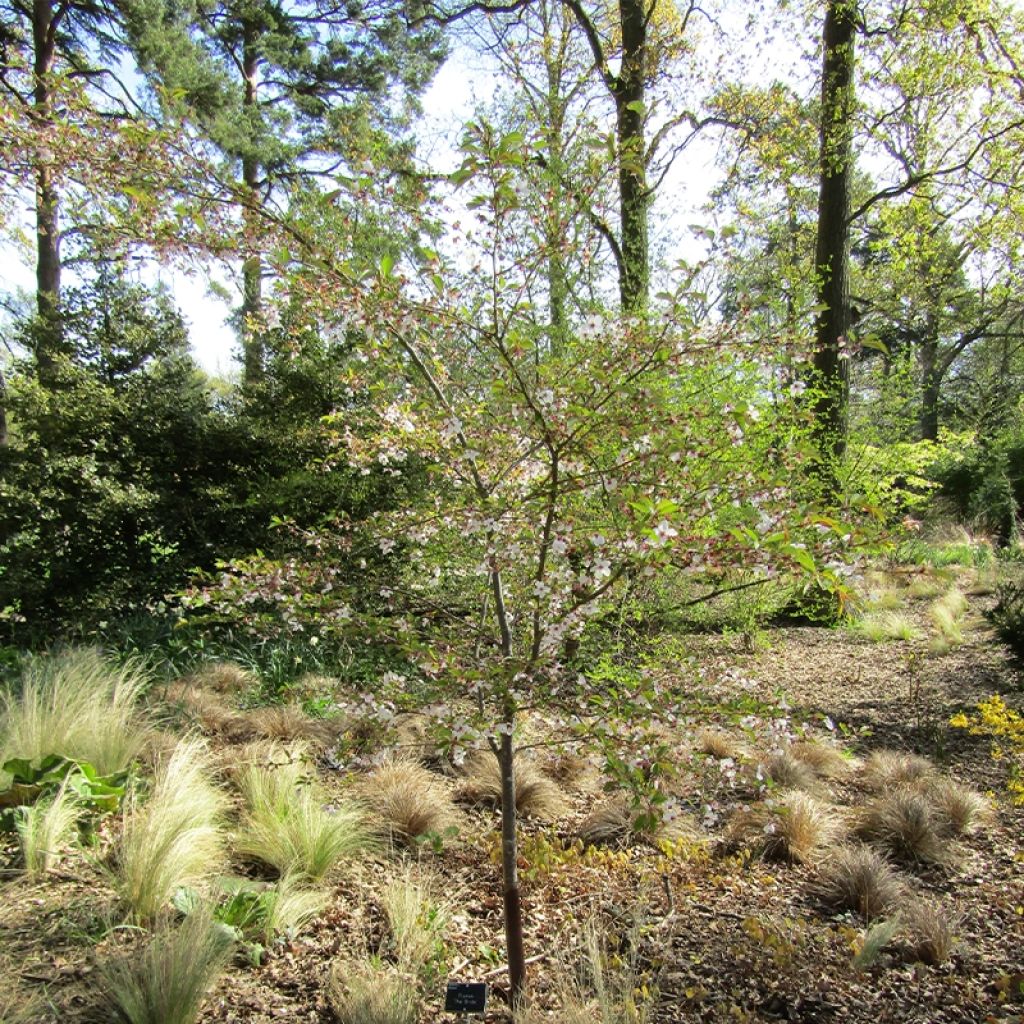

Prunus The Bride
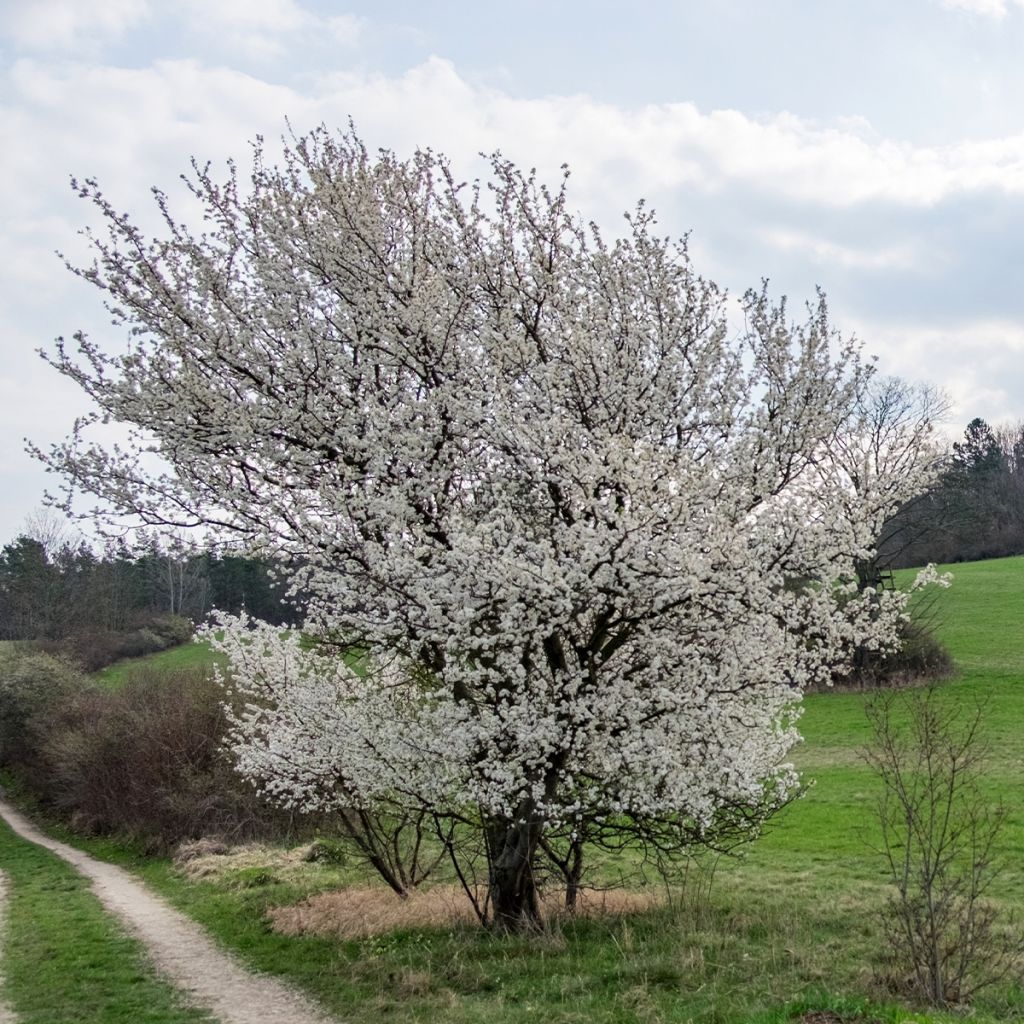

Prunus The Bride
Prunus The Bride
Prunus The Bride
Cherry
Why not try an alternative variety in stock?
View all →Order in the next for dispatch today!
Dispatch by letter from €3.90.
Delivery charge from €5.90 Oversize package delivery charge from €6.90.
More information
This item is not available in your country.
Schedule delivery date,
and select date in basket
This plant carries a 24 months recovery warranty
More information
We guarantee the quality of our plants for a full growing cycle, and will replace at our expense any plant that fails to recover under normal climatic and planting conditions.
Oversize package: home delivery by special carrier from €6.90 per order..
Express home delivery from €8.90.
Does this plant fit my garden?
Set up your Plantfit profile →
Description
Prunus 'The Bride' is a particularly floriferous Japanese flowering cherry tree. In March-April, it is covered in a profusion of small white flowers, greatly appreciated by bees. These gradually give way to new foliage, which covers the tree with beautiful bright green leaves. When autumn arrives, this Prunus shines again in the garden, ablaze with red-orange colours. Thriving in most soils, easy to grow in sunny locations and very hardy, this variety is a pure delight in the garden.
Flowering cherries are members of the large Rosaceae family, which includes both ornamental species (such as Roses, Cotoneaster, Pyracantha, Kerria...) and most of our fruit trees (Apple trees, Pear trees, Cherry trees, Peach trees...) as well as wild species found in our countryside. The genus Prunus is very extensive, with over 200 species, including fruit trees and especially ornamental trees, some of which are among the most beautiful flowering trees in our gardens. Flowering cherries are part of this group and are revered in Japan, where festivals are dedicated to them. The Bride is sometimes presented as a variety of Prunus incisa, a Japanese species with abundant white-pink flowers, found spontaneously on the slopes of Mount Fuji. This variety comes from a selection made by Harry van Trier from a seedling of Prunus 'Pandora', a flowering cherry tree, itself resulting from the cross-breeding of Prunus subhirtella 'Rosea' with Prunus yedoensis. The Bride comes from the famous Kalmthout Arboretum in Belgium, which introduced it in 1989.
Being of relatively slow growth, this small tree initially has a somewhat spherical habit, but spreads over time to take on a beautiful spreading form. In 20 years, it will reach approximately 4m (13ft) in height and spread, and may continue to grow up to 5m (16ft) or slightly more. In March, it is covered in pink flower buds that open into simple 5-petalled flowers, initially pale pink and then white. Appearing before the leaves, they gradually give way to small dark red fruits, round to oval in shape and about 1cm (1in) in diameter. The leaves, which emerge with a slight bronze colour, become bright green during the season. They are entire, lanceolate, measure from 3 to 6cm (1 to 2in) in length, and have finely toothed edges. In autumn, the deciduous foliage takes on intense warm colours, in shades of red and orange.
Easy to grow, this small flowering cherry tree thrives in most soils, including neutral, or chalky soils. It appreciates some moisture but is fairly tolerant as long as the soil is not too dry or waterlogged in winter. It prefers sunny locations to flourish, but is not really afraid of the cold, being hardy down to approximately -23°C (1°F). However, it should be protected from cold drafts to avoid damaging its beautiful flowering.
The Bride is a very good variety for small gardens, definitely one that deserves to be chosen when space is limited. Not only is its spring flowering remarkable, but its autumn colours make it worth planting in a border alongside other valuable plants. Among the plants that work well with this cherry tree, it can be associated with later-flowering plants, such as Weigela florida Magical Rainbow, whose variegated foliage will contrast with its own pink flowers in May-June. A stronger foliage contrast can be achieved with Weigela florida Alexandra, which has beautiful purple foliage. For the summer, the very attractive flowers of Hibiscus syriacus will take over, as well as Lagerstroemias, the superb Indian Lilacs with their vibrant colours until the end of summer.
Prunus The Bride in pictures
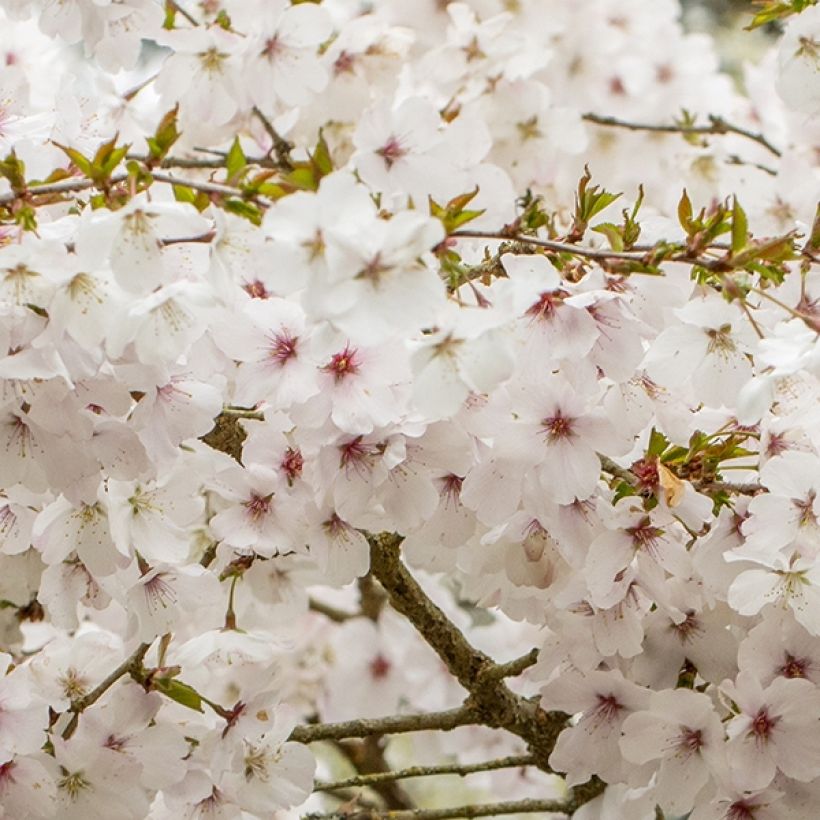

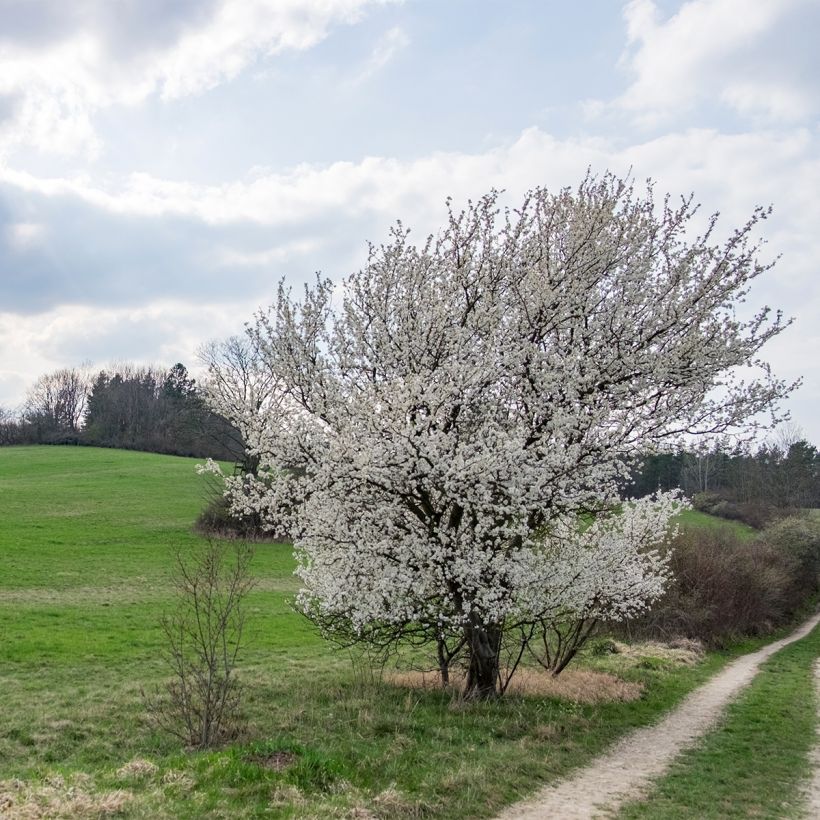

Plant habit
Flowering
Foliage
Botanical data
Prunus
The Bride
Rosaceae
Cherry
Cultivar or hybrid
Other Prunus
Planting and care
Prunus The Bride should be planted in spring or autumn, depending on the climate. It thrives in full sun in any soil that is fairly rich, well-drained, and loamy. It tolerates the presence of limestone in the soil and does not appreciate excessively acidic and poor soils. Once established, it can go without watering in summer if the soil remains moist deep down. Water during abnormally dry and hot weather. During planting, mix your soil with compost at a ratio of 50%. Dig a large planting hole and soak the root ball of your Prunus in a bucket of water until no more air bubbles rise to the surface (about fifteen minutes). Position the root ball so that it is level with the surrounding soil, then backfill around it.
Every spring, apply a fertiliser for flowering bushes. Be mindful of late frosts that could damage early flowering. It is therefore preferable to place the Prunus in a somewhat sheltered spot away from dry and cold winds.
Planting period
Intended location
Care
This item has not been reviewed yet - be the first to leave a review about it.
Haven't found what you were looking for?
Hardiness is the lowest winter temperature a plant can endure without suffering serious damage or even dying. However, hardiness is affected by location (a sheltered area, such as a patio), protection (winter cover) and soil type (hardiness is improved by well-drained soil).

Photo Sharing Terms & Conditions
In order to encourage gardeners to interact and share their experiences, Promesse de fleurs offers various media enabling content to be uploaded onto its Site - in particular via the ‘Photo sharing’ module.
The User agrees to refrain from:
- Posting any content that is illegal, prejudicial, insulting, racist, inciteful to hatred, revisionist, contrary to public decency, that infringes on privacy or on the privacy rights of third parties, in particular the publicity rights of persons and goods, intellectual property rights, or the right to privacy.
- Submitting content on behalf of a third party;
- Impersonate the identity of a third party and/or publish any personal information about a third party;
In general, the User undertakes to refrain from any unethical behaviour.
All Content (in particular text, comments, files, images, photos, videos, creative works, etc.), which may be subject to property or intellectual property rights, image or other private rights, shall remain the property of the User, subject to the limited rights granted by the terms of the licence granted by Promesse de fleurs as stated below. Users are at liberty to publish or not to publish such Content on the Site, notably via the ‘Photo Sharing’ facility, and accept that this Content shall be made public and freely accessible, notably on the Internet.
Users further acknowledge, undertake to have ,and guarantee that they hold all necessary rights and permissions to publish such material on the Site, in particular with regard to the legislation in force pertaining to any privacy, property, intellectual property, image, or contractual rights, or rights of any other nature. By publishing such Content on the Site, Users acknowledge accepting full liability as publishers of the Content within the meaning of the law, and grant Promesse de fleurs, free of charge, an inclusive, worldwide licence for the said Content for the entire duration of its publication, including all reproduction, representation, up/downloading, displaying, performing, transmission, and storage rights.
Users also grant permission for their name to be linked to the Content and accept that this link may not always be made available.
By engaging in posting material, Users consent to their Content becoming automatically accessible on the Internet, in particular on other sites and/or blogs and/or web pages of the Promesse de fleurs site, including in particular social pages and the Promesse de fleurs catalogue.
Users may secure the removal of entrusted content free of charge by issuing a simple request via our contact form.
The flowering period indicated on our website applies to countries and regions located in USDA zone 8 (France, the United Kingdom, Ireland, the Netherlands, etc.)
It will vary according to where you live:
- In zones 9 to 10 (Italy, Spain, Greece, etc.), flowering will occur about 2 to 4 weeks earlier.
- In zones 6 to 7 (Germany, Poland, Slovenia, and lower mountainous regions), flowering will be delayed by 2 to 3 weeks.
- In zone 5 (Central Europe, Scandinavia), blooming will be delayed by 3 to 5 weeks.
In temperate climates, pruning of spring-flowering shrubs (forsythia, spireas, etc.) should be done just after flowering.
Pruning of summer-flowering shrubs (Indian Lilac, Perovskia, etc.) can be done in winter or spring.
In cold regions as well as with frost-sensitive plants, avoid pruning too early when severe frosts may still occur.
The planting period indicated on our website applies to countries and regions located in USDA zone 8 (France, United Kingdom, Ireland, Netherlands).
It will vary according to where you live:
- In Mediterranean zones (Marseille, Madrid, Milan, etc.), autumn and winter are the best planting periods.
- In continental zones (Strasbourg, Munich, Vienna, etc.), delay planting by 2 to 3 weeks in spring and bring it forward by 2 to 4 weeks in autumn.
- In mountainous regions (the Alps, Pyrenees, Carpathians, etc.), it is best to plant in late spring (May-June) or late summer (August-September).
The harvesting period indicated on our website applies to countries and regions in USDA zone 8 (France, England, Ireland, the Netherlands).
In colder areas (Scandinavia, Poland, Austria...) fruit and vegetable harvests are likely to be delayed by 3-4 weeks.
In warmer areas (Italy, Spain, Greece, etc.), harvesting will probably take place earlier, depending on weather conditions.
The sowing periods indicated on our website apply to countries and regions within USDA Zone 8 (France, UK, Ireland, Netherlands).
In colder areas (Scandinavia, Poland, Austria...), delay any outdoor sowing by 3-4 weeks, or sow under glass.
In warmer climes (Italy, Spain, Greece, etc.), bring outdoor sowing forward by a few weeks.
